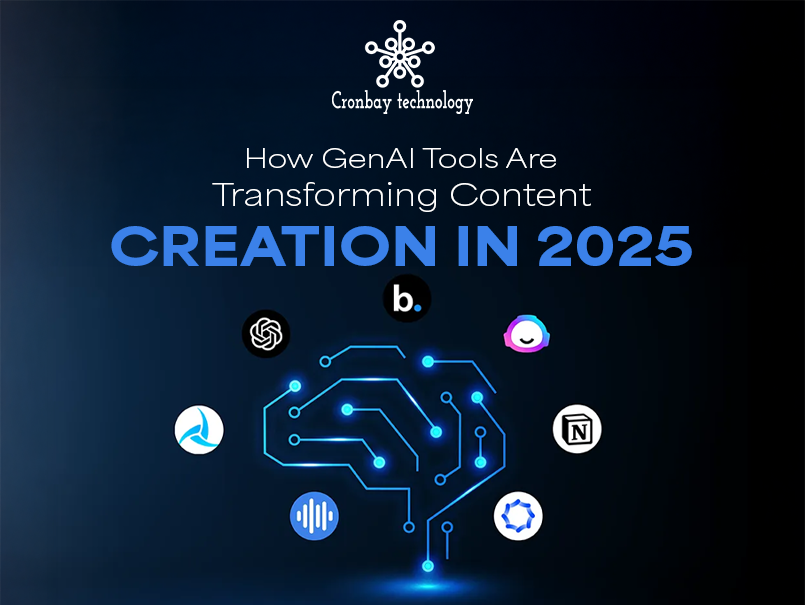Imagine this.. you’ve built a beautiful website, written killer blogs, and even invested in ads yet your content still isn’t getting the visibility it deserves. Frustrating, right?
That’s because in today’s digital world, simply creating content isn’t enough. You also need to give search engines and social platforms a clear “map” to understand and showcase your content in the best possible way.
That’s where Schema Markup vs. Open Graph comes into play. Think of them as your website’s backstage crew working silently but powerfully to make your content shine in search results and social shares.
Now, as a business owner or marketer, you might be wondering:
- Should I focus on SEO Schema Markup or Open Graph?
- Do search engines really treat one as a ranking factor over the other?
- And most importantly—what are the key differences between Schema Markup vs. Open Graph?
If these questions have been circling in your mind, you’re not alone. The good news?
Cronbay has you covered. From breaking down the basics of schema.org to showing you how to optimize Open Graph meta tags, we’ll walk you step by step so you can make smart SEO choices, stand out online, and attract the audience you deserve.
So, let’s dive in and uncover how these hidden tools can level up your website and unlock more organic traffic.
What is SEO Schema.org?
Before you get into the Schema Markup vs. Open Graph, let us clear the basics of each.
SEO schema.org's meaning is very simple. In short, SEO schema.org is a set of terms that lets you add extra details to your web pages, helping search engines understand your content better. For example, if you add schema to a recipe page, Google shows the cooking time, ingredients, and a star rating right in the search results.
What is the Definition of Schema Markup?

To be simple, schema markup is a type of structured data snippet that search engines like Google and Microsoft read to display richer, more detailed results in search pages or emails.
For example, you can add product schema markup to your e-commerce product pages to show details like different product options such as sizes and colors directly in search results.
This will make it easier for users to find what they're looking for and can potentially improve user engagement.
What is the Importance of SEO Schema Markup?

The top advantages of SEO schema markup include:
- It helps search engines understand your content better, improving indexing.
- It helps improve your appearance in search results, potentially leading to rich results.
- It helps give you a competitive edge in search engine optimization.
- It helps boost overall SEO performance and organic traffic.
- It helps to enhance user experience and content visibility.
Did You Know?
Websites that use schema markup SEO have a 30% higher click-through rate compared to those that don’t. By simply adding structured data like ratings, FAQs, and product details, you can drastically improve how your site stands out in Google search results.
What are the Common Types of Schema.org?
- JSON-LD
The first on the list of SEO schema.org is JSON-LD. This is a JavaScript-based method for adding schema markup. It is a simple method that allows developers to organize data in name-value pairs, making it easier to generate schema markup.
- RDFa
The second on the list of common types of schema.org is RDFa. This is an HTML5 extension that lets you add structured data to elements like People, Places, Events, and Reviews using HTML tag attributes.
- Microdata
The third on the list is Microdata. Similar to RDFa, Microdata uses HTML tag attributes to add structured data to your content, mostly used to describe elements within the page.
That's it for the basics. Now, let us learn about open graphs for social media and content marketing.
What is an Open Graph and What Are Its Benefits?

Open Graph is a tool created by Facebook that lets websites control how your content will look when shared on social media platforms. Some of the main benefits of open graphs include:
- It helps improve click-through rates and user engagement.
- It helps control how content will appear on social media, enhancing your content strategy.
- It helps boost engagement with eye-catching previews.
- It helps maintain brand consistency across platforms.
- It helps increase the shareability of your content.
- It helps optimize social media performance and content visibility.
Pro Hack for Social Media SEO:
Always use a 1200 x 630 px image in your Open Graph meta tags. This ensures your blog preview looks clean and professional across Facebook, LinkedIn, and Twitter, preventing pixelation or awkward cropping. More polished previews = higher engagement!
What Are Open Graph Meta Tags and What Are Its Common Types?

In simple words, open graph meta tags are small pieces of code in a web page's
section that provide social media platforms with key information about the content. For instance, let's say you wrote a blog post on 'Top Travel Destinations.' With Open Graph tags, you can:- Set a custom title, like ‘Top 10 Travel Destinations for 2024.’
- Add a short description of the post.
- Choose an image, like a beach, to represent it.
When shared on social media, this title, description, and image will appear, making the link more clickable and improving your content's visibility.
The common types of open graph meta tags include:

- og: title
This is the title that appears on the social media preview, often matching your webpage's title tag. It tells users what the page is about in a few words.
- og: type
This tag specifies the type of content, like 'article' or 'website.' Specifying the type helps social media platforms understand and display the content correctly./p>
- og: image
This open graph meta tag specifies the main image shown in the link preview. It's a key part of the visual appeal and can drive more clicks by making your content stand out.
- og: description
This is a brief description of the page content, similar to the meta descriptions. It gives users a quick summary of what they can expect, encouraging them to engage.
That's it! Are you already tired? How about getting into the ultimate part of this blog? In the next part, you find the main differences between Schema Markup vs. Open Graph. Come let's look into it one by one.
SEO Insight:
While Open Graph tags don’t directly affect Google rankings, they significantly improve social media CTR (click-through rate). And higher CTR on social links indirectly supports SEO by driving more traffic and engagement signals back to your site.
Top 10 Differences Between Schema Markup vs. Open Graph
| Aspect | Schema Markup | Open Graph |
|---|---|---|
| Purpose | Improves SEO by helping search engines understand content and can be a ranking factor. | Optimizes content for social media sharing. |
| Target Platform | Primarily used by search engines like Google Search Console. | Primarily used by social media platforms like Facebook. |
| Format | Uses structured data formats like JSON-LD, Microdata markup, or RDFa. | Uses meta tags in HTML for social media sharing. |
| Rich Snippets | Can generate rich results in search results like star ratings or product details. | Controls how content appears when shared on social media like title and image. |
| Content Focus | Focuses on improving visibility in search results and indexing. | Focuses on how content looks when shared on social platforms. |
| Compatibility | Works with Google, Bing, and other search engines. | Works with Facebook, Twitter, LinkedIn, and other social media platforms. |
| Implementation | Typically added to HTML code or through plugins like Yoast SEO. | Typically added to HTML code or through plugins like Yoast SEO. Added via meta tags in the HTML header section. |
| Usage for E-commerce | Can mark up products, prices, reviews, and availability using product schema markup. | Mainly controls how product links appear when shared. |
| Example | Schema can display product ratings, availability, and price in search results. | Open Graph can show the product's image, title, and description when shared on Facebook. |
| SEO Impact | Directly impacts search rankings and organic visibility. | No direct impact on search engine rankings but improves content visibility on social platforms. |
That's it! This was all about the Schema Markup vs. Open Graph. Ready to implement these options in your online strategy?
Let us find the common application of both options. This will bring more confidence, helping you make the right choice for your SEO strategy and content marketing efforts.
Top Application of Schema Markup

- Schema Markup for E-Commerce
The first on the list of types of schema markup in SEO is Schema Markup for E-commerce Websites. This markup provides Google with essential product details like the image, rating, price, shipping info, availability, etc.
Making it easier for searchers to view all details directly in the search results. Implementing product schema markup can significantly improve your product's visibility in search results.
- Schema Markup for Reviews
The second on the list of schema markup SEO examples is Schema Markup for Reviews.
This markup adds a star rating to your website in search results, showing customer feedback and helping potential buyers decide based on others' experiences with your product or service.
- Schema Markup for Website
The third on the list of types of schema markup in SEO is Schema Markup for Websites. This markup helps Google understand the content of articles or blogs such as title, featured image, author, and publish date, potentially improving your content's visibility in search results.
- Schema Markup for Local SEO
The fourth on the list is Local Business Schema Markup. This markup gives Google important details about your local business, like your name, address, phone number, and hours of operation, helping buyers or anyone who is searching for your business.
- Video Schema Markup
Another important application is video schema markup, which helps search engines understand the content of your videos, potentially leading to rich results in video searches.
Did You Know?
You don’t have to pick one over the other! Many successful websites combine schema markup structured data for SEO with Open Graph tags for social media. This “dual strategy” helps you rank on Google and look attractive when shared on Facebook or Twitter.
Top Application of Open Graph
- Open Graph for Social Media
The first on the list of common applications is Open Graph for Social Media. Here, you use an open graph for Facebook and other social media platforms like Twitter, and LinkedIn.
It is used for optimizing how links will appear when shared on social platforms and controls elements like title, description, image, etc.
- Open Graph for Websites
The next on the list is Open Graph for Websites. Here it looks into the control link previews across different social media platforms and ensures users see a consistent, attractive presentation of the site's content wherever it's shared, enhancing your overall digital footprint.
Insight:
Posts with optimized Open Graph previews (clear title, strong description, and branded image) generate up to 3x more shares on social media. More shares = more backlinks, which can indirectly boost SEO rankings
Which Option To Ideal For You?
In essence, when deciding between Schema Markup vs. Open Graph, it depends on your goals. If you're aiming to improve search engine rankings and enhance your visibility, Schema Markup is your best bet.
On the other hand, if you're focused on making your content shine on social media platforms like Facebook and Twitter, Open Graph is the way to go.
However, how about benefiting from both? By combining Schema Markup for SEO with Open Graph for social media
you can 10x your visibility and reach your target audience more effectively. This comprehensive approach can significantly boost your online presence and organic traffic.
Need any help in skyrocketing your brand? Contact Cronbay's expert team today and let us help your website stand out from the competitors! Our expertise in implementing schema markup and optimizing for social media can give your digital marketing efforts a significant boost.
Frequently Asked Questions
1. What is structured data markup in SEO?
Ans. Structured data markup in SEO is a way of organizing information on your website using a standardized format, like Schema.org. This helps search engines better understand your content, improving visibility and enhancing your SEO performance. You can use a Google Data markup validator to ensure your markup is correct.
2. What are common schema markup tools?
Ans.Common schema markup tools include Google's Structured Data Markup Helper, Schema Pro, and JSON-LD Generator. These tools help you create and implement structured data on your website, making it easier for search engines to understand and display your content. Some tools can even help you generate schema markup automatically.
3. What are some examples of technical SEO schema generators?
Ans.Some examples of technical SEO schema generators include Google's Structured Data Markup Helper, Merkle's Schema Markup Generator, and Schema Markup Generator by Hall Analysis. These tools can help you create various types of schema markup, including organization schema and breadcrumb schema markup.
4. What are some examples of open graph generators?
Ans. Some examples of Open Graph generators include the Open Graph Protocol website, ShareLink's Open Graph Generator, and the Open Graph Meta Tags Generator. These tools help you create meta tags for social media sharing, ensuring your content displays correctly on platforms like Facebook and Twitter.
5. What is the main difference between Open Graph vs. Schema Markup?
Ans. The main difference between Open Graph vs. Schema Markup is that Schema Markup is used to improve SEO by providing search engines with structured data, potentially influencing rich results and knowledge panels. Open Graph is used to optimize content sharing on social media platforms by defining how your content appears when shared, enhancing your content's visibility across different platforms.





